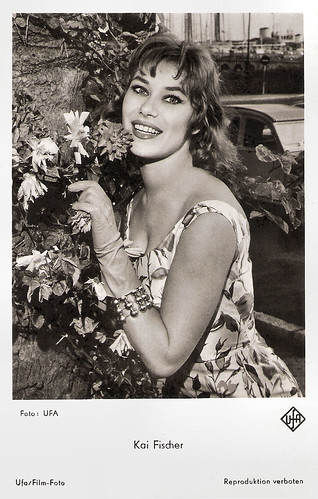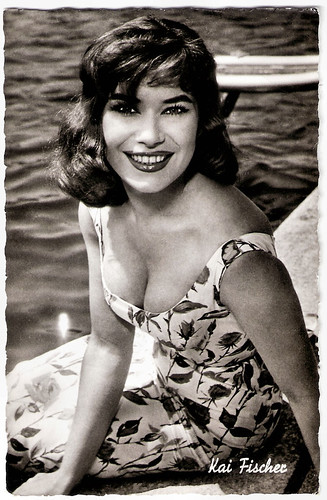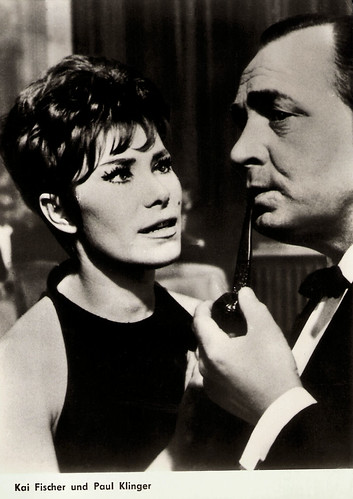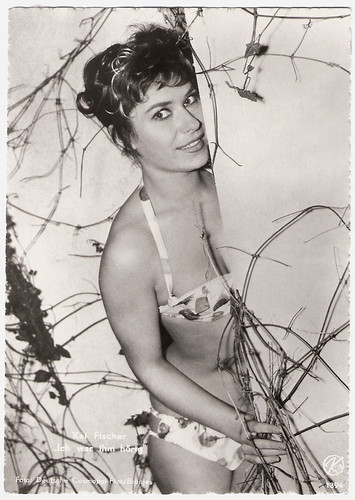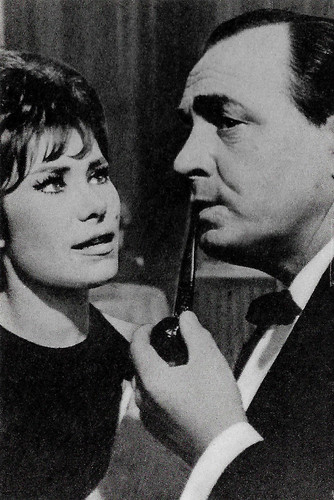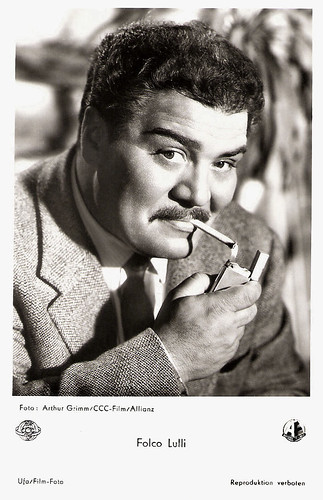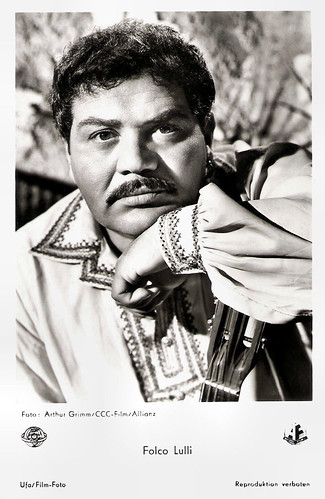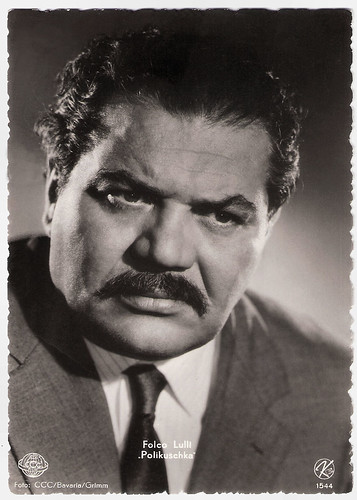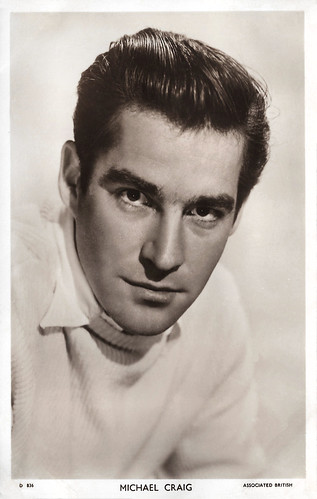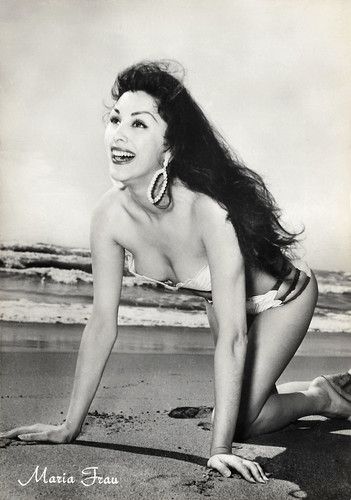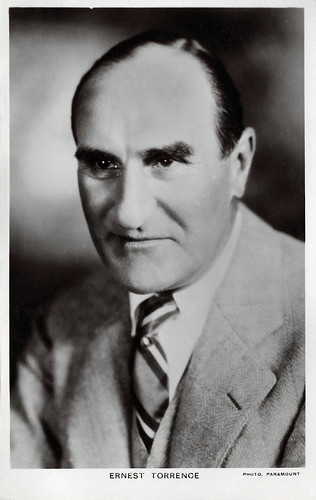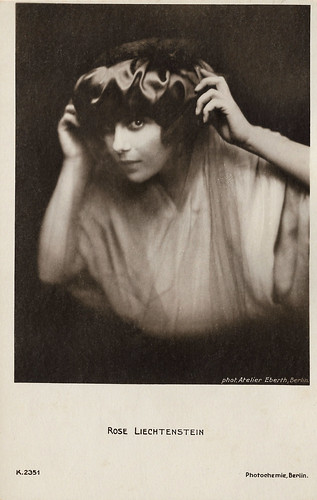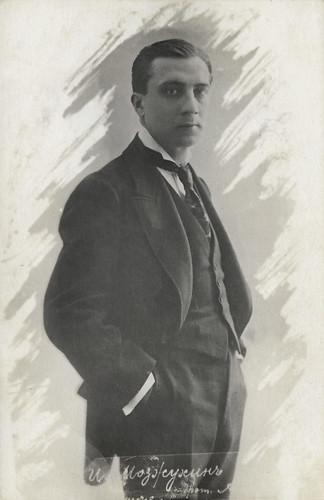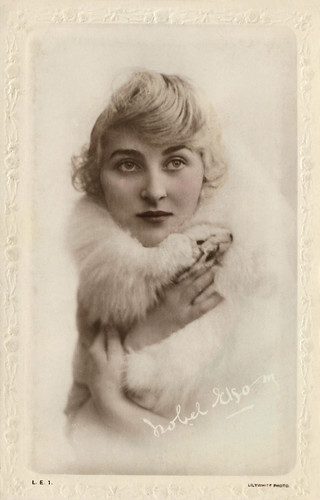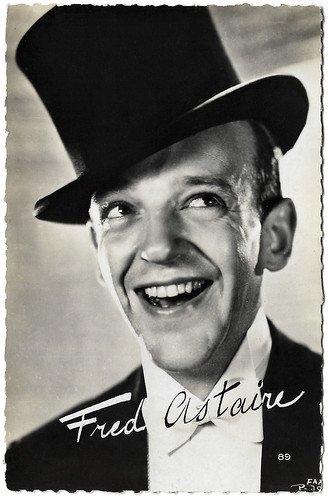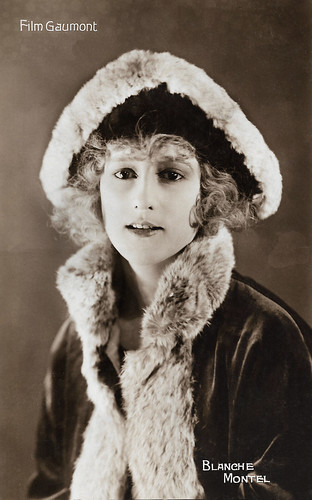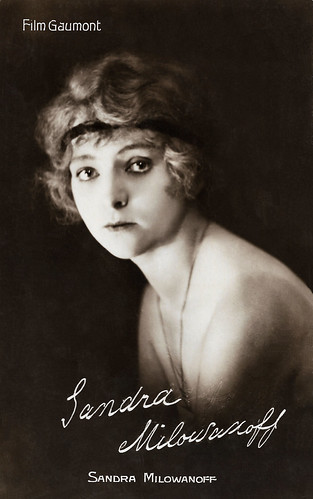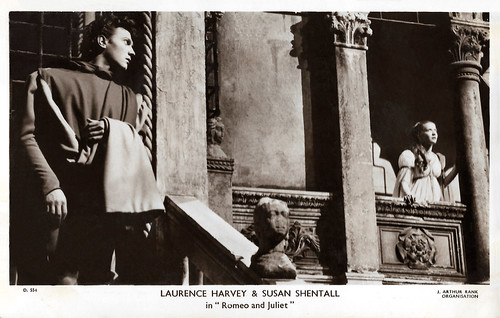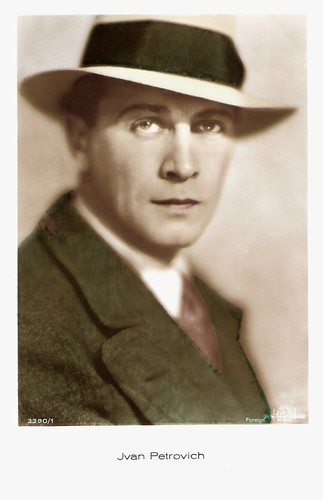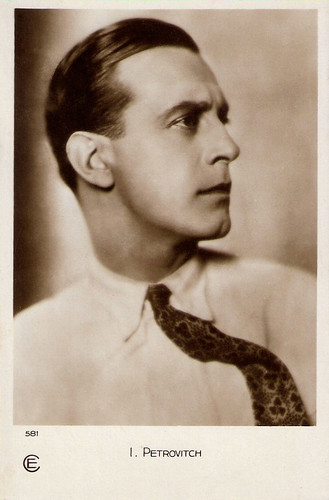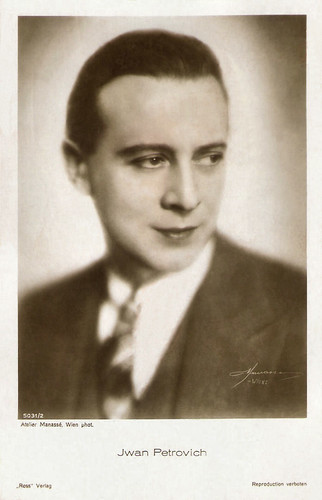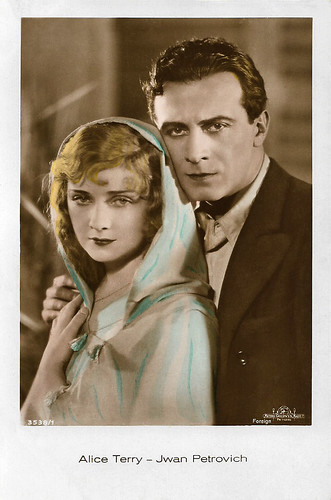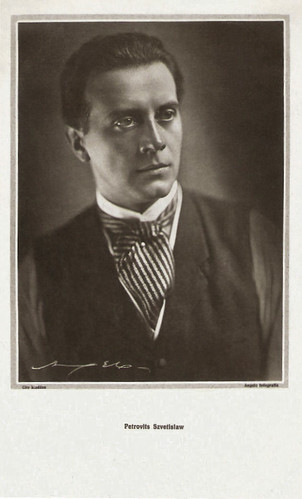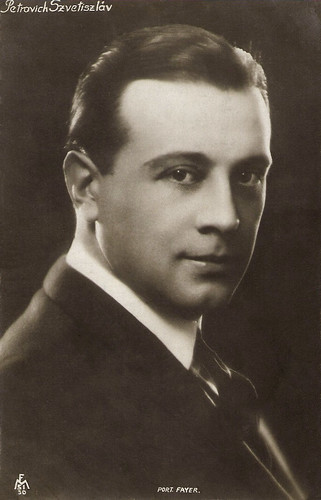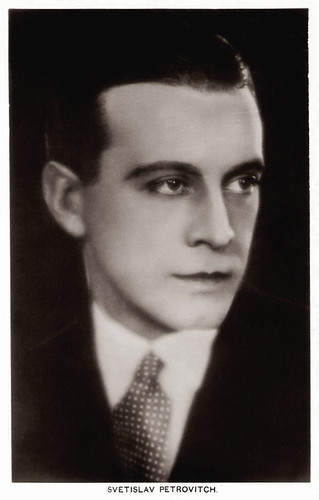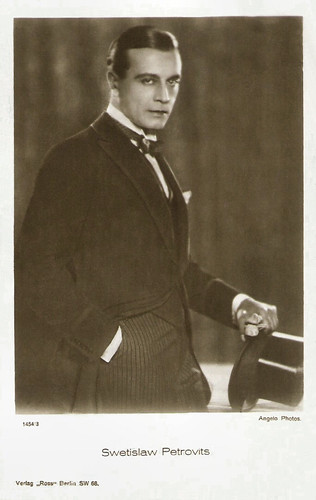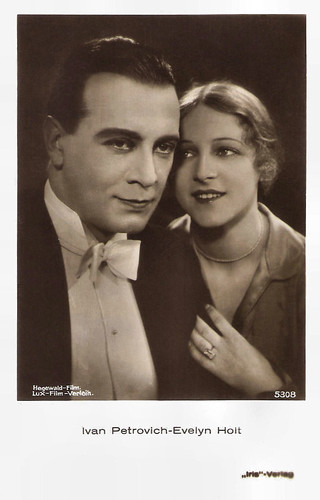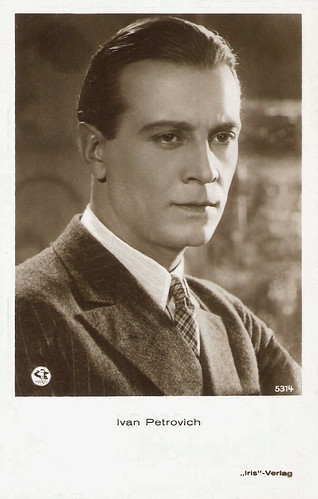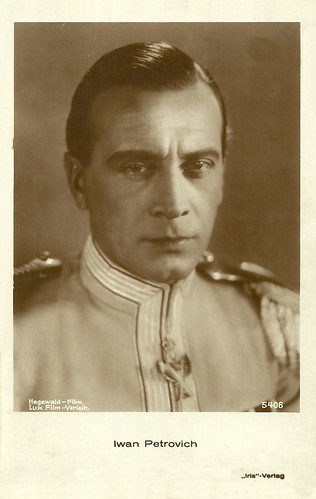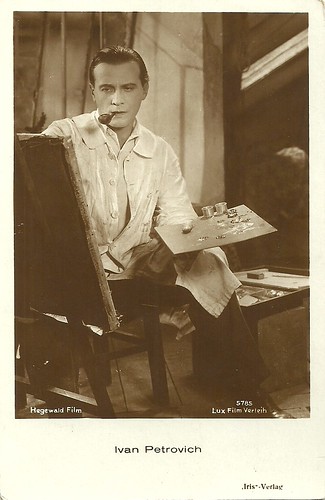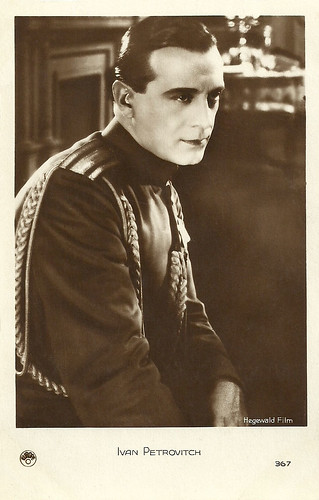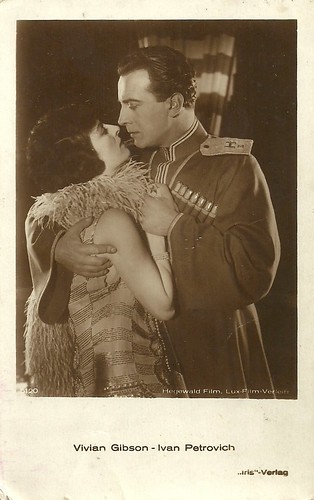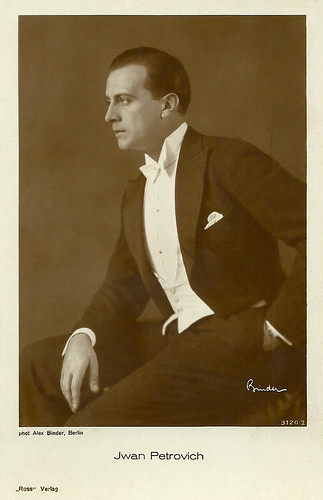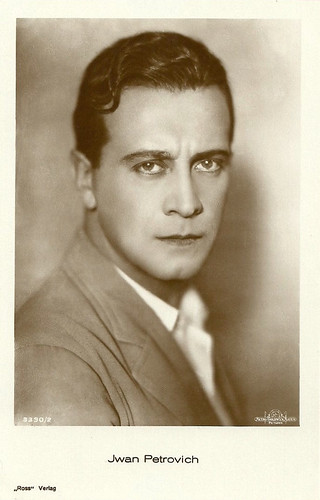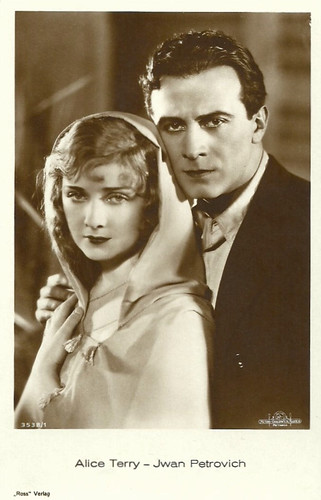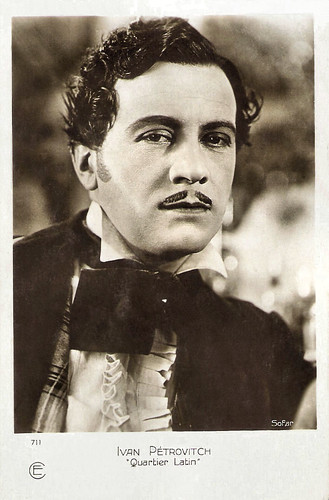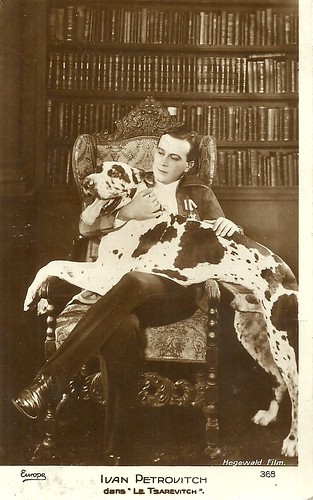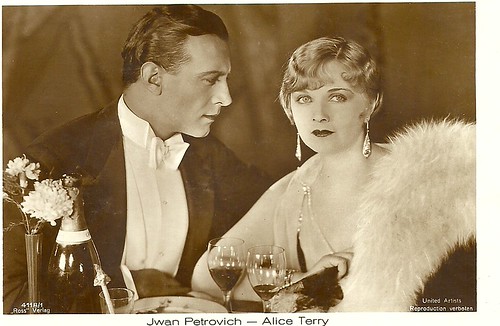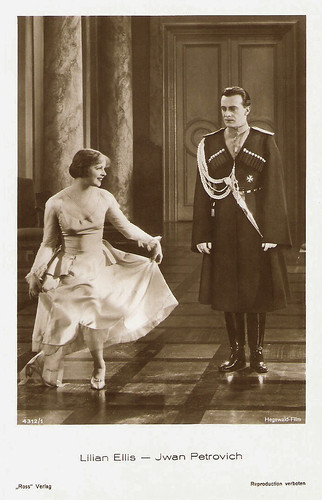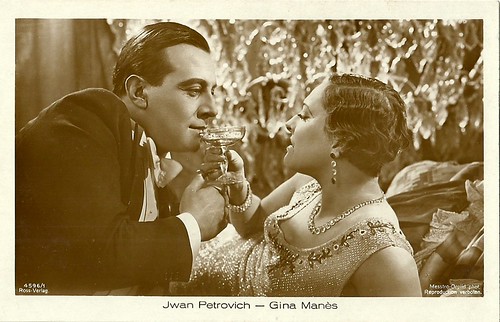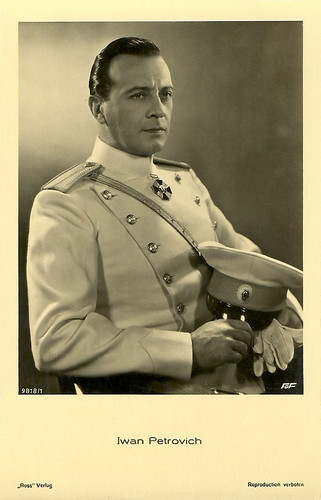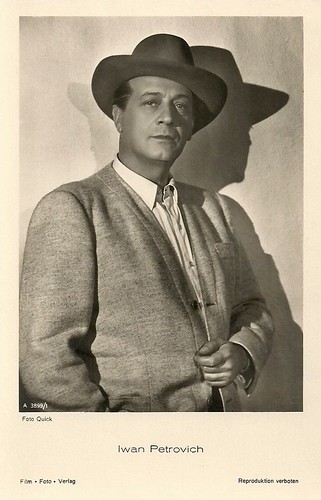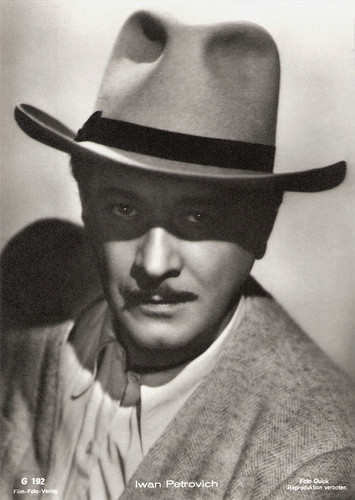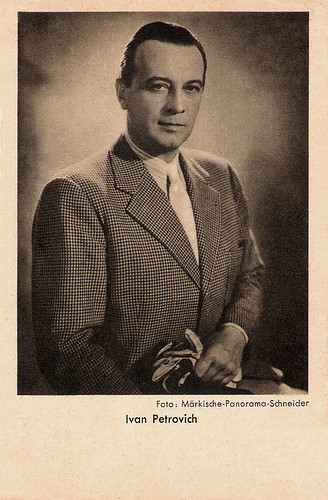French actress Jeanne Moreau, one of biggest stars of the European cinema, has died today at the age of 89. Moreau was found dead at her home in Paris. The legendary film star was the personification of French womanhood and sensuality. Moreau (1928-2017) had a diverse career: she was a magnificent stage and film actress, a producer, screenwriter and film director, a successful singer with a substantial recording career, and a theatre and opera director. She combined off-kilter beauty with strong character in Nouvelle Vague classics as Ascenseur pour l'échafaud (1958) and Les amants (1959). Her role as the flamboyant, free-spirited Catherine with her devil-may-care sensuality in Jules et Jim (1962) is one of the greatest performances in the history of the cinema. Throughout her long career with more than 130 films, Jeanne Moreau worked with some of the most notable film directors ever.

French postcard by E.D.U.G., no. 81. Photo: Sam Lévin.
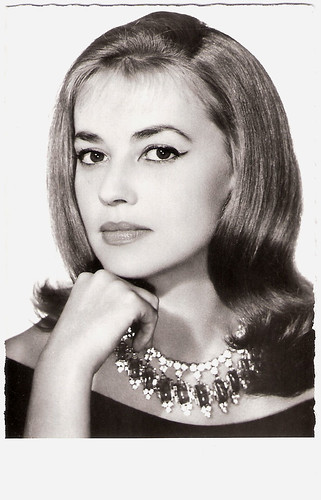
French postcard by Editions P.I., no. 987. Photo: Sam Lévin.

French postcard by E.D.U.G., no. 275. Offered by Corvisart, Epinal. Photo: Sam Lévin.
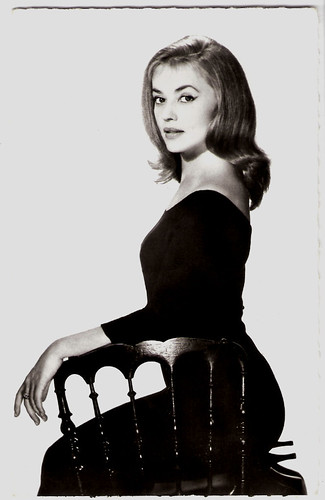
French postcard by Editions du Globe, Paris no. 809. Photo: Sam Lévin, Paris.
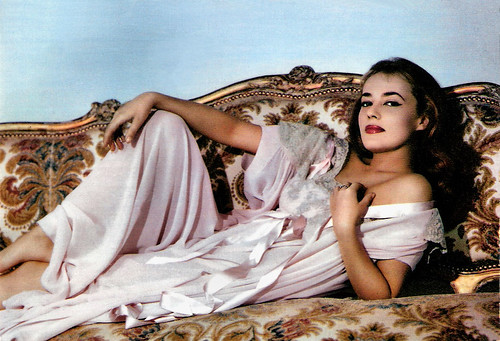
French postcard by Editions P.I., Paris, no. 1017. Photo: Sam Lévin.
Jeanne Moreau was born in 1928, Paris, France. Her father, Anatole-Désiré Moreau, owned a restaurant in Montmartre, Paris. Her mother, Katherine Buckley, was an English dancer who had come to the Folies Bergère with the Tiller Girls.
Jeanne grew up living part of the time in Paris, and part of the time in Mazirat, her father's native village. During the Second World War, Katherine and Jeanne were forced to stay in Paris; classified as alien enemies. She attended the Lycee Edgar Quinet in Paris, and began to discover her love of literature and the theatre.
When her parents divorced in the late 1940s and her mother returned to England, Jeanne remained with her father in Montmartre. Opposing her father's wishes, she decided to become an actress. She trained for the stage at the Paris Conservatoire, and made her theatrical debut in 1947 at the Avignon Festival.
In 1948, when she was only 20 years old, she became the youngest full-time member in the history of the Comédie-Française, France's most prestigious theatrical company. Her first play was Ivan Turgenev's A Month in the Country, directed by Jean Meyer. She soon was one of the leading actresses of the troupe and was recognised as the prime stage actress of her generation.
She left in 1951, finding the Comédie-Française too restrictive and authoritarian, and joined the more experimental Théâtre Nationale Populaire.
Moreau also began playing small roles in films like Dernier amour/Last Love (Jean Stelli, 1949). During the 1950s, she appeared in several mainstream films like the superb thriller Touchez pas au grisbi/Grisbi (Jacques Becker, 1953) with Jean Gabin and the colourful historical drama La reine Margot/Queen Margot (Jean Dréville, 1954).

German postcard by Ufa, Berlin-Tempelhof, no. FK 1015. Photo: Sam Lévin, Paris.
French postcard by E.D.U.G., no. 81. Photo: Sam Lévin.

French postcard by Editions P.I., no. 987. Photo: Sam Lévin.

French postcard by E.D.U.G., no. 275. Offered by Corvisart, Epinal. Photo: Sam Lévin.

French postcard by Editions du Globe, Paris no. 809. Photo: Sam Lévin, Paris.

French postcard by Editions P.I., Paris, no. 1017. Photo: Sam Lévin.
Alien Enemies
Jeanne Moreau was born in 1928, Paris, France. Her father, Anatole-Désiré Moreau, owned a restaurant in Montmartre, Paris. Her mother, Katherine Buckley, was an English dancer who had come to the Folies Bergère with the Tiller Girls.
Jeanne grew up living part of the time in Paris, and part of the time in Mazirat, her father's native village. During the Second World War, Katherine and Jeanne were forced to stay in Paris; classified as alien enemies. She attended the Lycee Edgar Quinet in Paris, and began to discover her love of literature and the theatre.
When her parents divorced in the late 1940s and her mother returned to England, Jeanne remained with her father in Montmartre. Opposing her father's wishes, she decided to become an actress. She trained for the stage at the Paris Conservatoire, and made her theatrical debut in 1947 at the Avignon Festival.
In 1948, when she was only 20 years old, she became the youngest full-time member in the history of the Comédie-Française, France's most prestigious theatrical company. Her first play was Ivan Turgenev's A Month in the Country, directed by Jean Meyer. She soon was one of the leading actresses of the troupe and was recognised as the prime stage actress of her generation.
She left in 1951, finding the Comédie-Française too restrictive and authoritarian, and joined the more experimental Théâtre Nationale Populaire.
Moreau also began playing small roles in films like Dernier amour/Last Love (Jean Stelli, 1949). During the 1950s, she appeared in several mainstream films like the superb thriller Touchez pas au grisbi/Grisbi (Jacques Becker, 1953) with Jean Gabin and the colourful historical drama La reine Margot/Queen Margot (Jean Dréville, 1954).

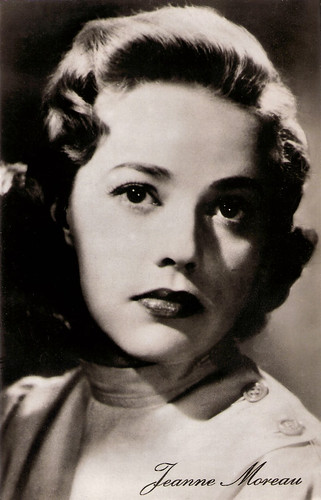
East-German postcard by VEB Progress Film-Vertrieb, Berlin, 514, 1957. Photo: Unifrance. Publicity still for Les hommes en blanc/Men in White (Ralph Habib, 1955).
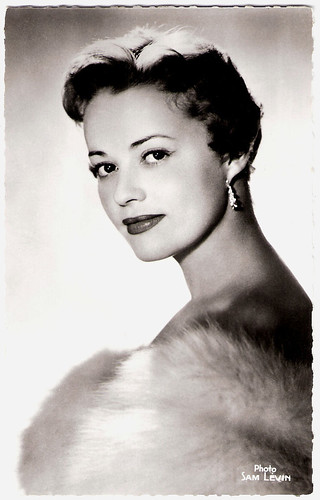
French postcard by Editions du Globe (E.D.U.G.), no. 328. Photo: Sam Lévin.
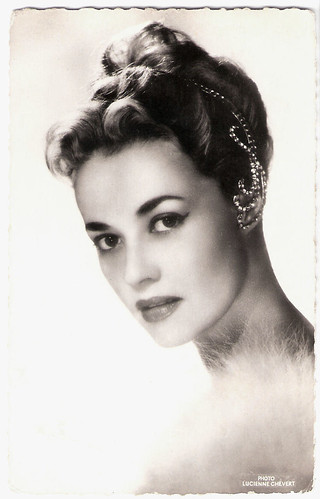
French postcard by Editions du Globe (E.D.U.G.), no. 620. Photo: Lucienne Chevert.
Scandal
Jeanne Moreau was almost 30 before her film career really took off thanks to her work with first-time director Louis Malle. His murder mystery Ascenseur pour l'échafaud seemed to be in the same thriller genre as her earlier films, but after seeing the first week of dailies for Ascenseur the technicians at the film lab went to the producer and said: “You must not let Malle destroy Jeanne Moreau”.
Louis Malle later explained: “She was lit only by the windows of the Champs Elysées. That had never been done. Cameramen would have forced her to wear a lot of make-up and they would put a lot of light on her, because, supposedly, her face was not photogenic”.
This lack of artifice revealed Moreau's ‘essential qualities’: "she could be almost ugly and then, ten seconds later, she would turn her face and would be incredibly attractive. But she would be herself.”
Ascenseur pour l'échafaud/Elevator to the Gallows (Louis Malle, 1958) was immediately followed by the controversial Les amants/The Lovers (Louis Malle, 1958). Moreau starred as a provincial wife who abandons her family for a man she has just met. Her earthy, intelligent and subtle portrayal of the adulteress caused a scandal in France.
The erotic scenes caused censorship problems all over the world. The American gossip columnists tagged her as 'The New Bardot' and Moreau instantly became an international sex symbol. Malle and his star separated privately, but professionally they would make several more films together, including the excellent Le feu follet/The Fire Within (1963).
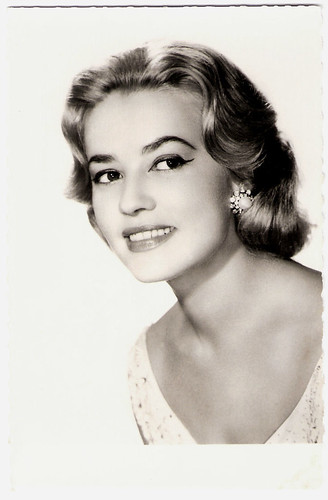
French postcard by Editions P.I., no. 931. Offered by Les Carbones Korès 'Carboplane'. Photo: Sam Lévin.
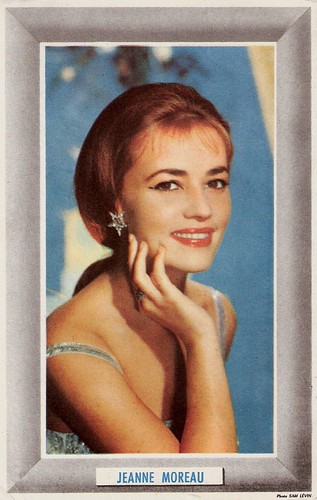
French postcard by St. Anne, Marseille. Photo: Sam Lévin.
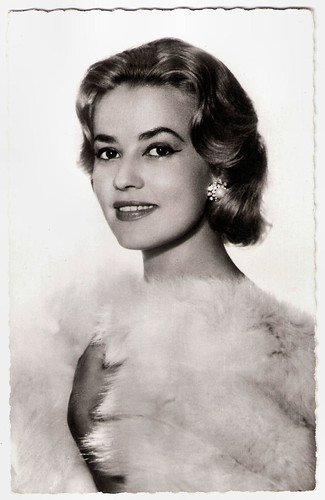
French postcard by Editions du Globe, Paris no. 734. Photo: Sam Lévin, Paris.
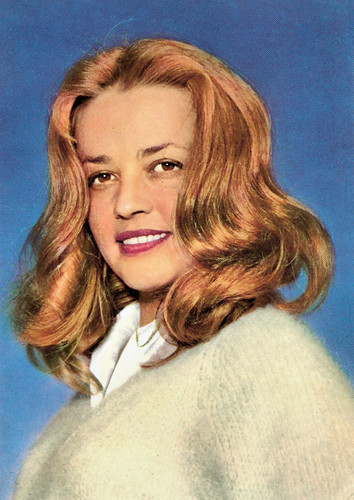
Italian postcard by Rotalcolor, Milano, no. 258.
Marguerite Duras
Jeanne Moreau went on to work with many of the best known Nouvelle Vague (New Wave) and avant-garde directors. Her most enduring role is the flamboyant and magnetic Catherine in Truffaut's explosive Jules et Jim/Jules and Jim (François Truffaut), 1962.
She co-produced Jules et Jim herself and also co-produced La baie des anges/Bay of Angels (Jacques Demy, 1963) and Peau de banane/Banana Peel (Marcel Ophüls, 1963).
Her teaming with Brigitte Bardot in Viva Maria! (Louis Malle, 1965) was one of the major media events of 1965. Thanks to the on-screen chemistry between the two top French female stars of the period, the film became an international hit. Five years after Jules et Jim, she worked again with François Truffaut, starring as an icy murderess in the popular Alfred Hitchcock homage La mariée était en noir/The Bride Wore Black (1967).
She also worked with such notable directors as Michelangelo Antonioni at La notte/The Night (1961), and Beyond the Clouds (1995), Orson Welles (Le procès/The Trial, 1962; Campanadas a medianoche/Chimes at Midnight, 1965; L’histoire immortelle/The Immortal Story, 1968; and the unfinished The Deep, 1970), Joseph Losey (Eva, 1962; Mr. Klein, 1976), Luis Buñuel (Le journal d'une femme de chambre/Diary of a Chambermaid, 1964), Elia Kazan (The Last Tycoon, 1976), Rainer Werner Fassbinder (Querelle, 1982), and Wim Wenders (Bis ans Ende der Welt/Until the End of the World, 1991).
Her stage hits include Anna Bonacci's L'heure éblouissante/The Dazzling Hour (1953), Jean Cocteau's La machine infernale (1954, as the Sphinx), George Bernard Shaw's Pygmalion (1955, as Eliza Doolittle), Tennessee Williams' Cat on a Hot Tin Roof (1956, as Maggie), Frank Wedekind's Lulu/Loulou (1976, title role), and Tennessee Williams' The Night of the Iguana (1985, as Hannah Jelkes).
She won the Best Actress Molière Award (the French equivalent of the Tony) in 1988 for her acclaimed performance in Hermann Broch's Le récit de la servante Zerline, a huge theatrical success which toured 11 countries. Moreau also enjoyed success as a vocalist. She released several albums and once performed with Frank Sinatra at Carnegie Hall.
Her name has been often associated, both socially and professionally, to that of writer-director Marguerite Duras. Apart from their close friendship, Moreau starred in two films based on Duras' novels, Moderato cantabile/Seven Days ... Seven Nights (Peter Brooks, 1960) and The Sailor from Gibraltar (Tony Richardson, 1970). Duras herself directed Moreau in Nathalie Granger (1972), and she was the narrator in another Duras screen adaptation, L'amant/The Lover (Jean-Jacques Annaud, 1992). She even went on to portray Duras in the biopic Cet amour-là/This Love (Josée Dayan, 2001).
Other major literary figures among her close friends were Jean Cocteau, Jean Genet, Henry Miller, and Anaïs Nin. Jeanne Moreau was the president of Equinoxe, an organisation which supports new European scriptwriters.
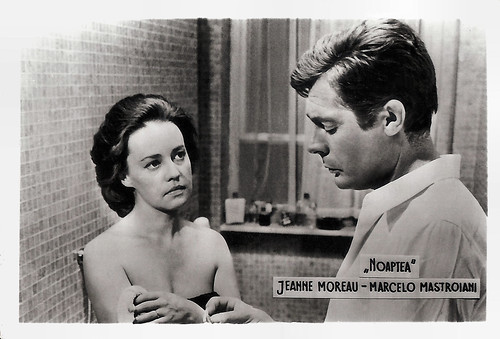
Small Romanian collectors card. Photo: publicity stil for La Notte (Michelangerlo Antonioni, 1961) with Jeanne Moreau and Marcello Mastroianni.

Romanian postcard by Casa Filmului Acin, no. 471. Photo: publicity still of Jeanne Moreau and Anthony Perkins in Le procès/The Trial (Orson Welles, 1962).

Romanian postcard by Casa Filmului Acin, no. 491. Photo: publicity still of Jeanne Moreau and Anthony Perkins in Le procès/The Trial (Orson Welles, 1962).
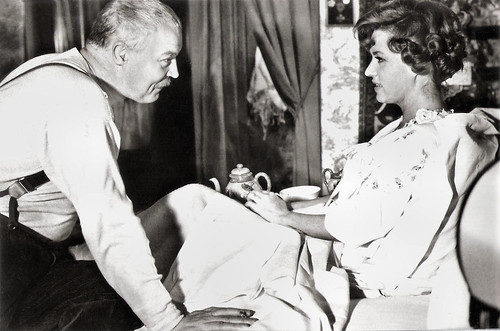
Romanian postcard by Casa Filmului Acin, no. 445. Photo: publicity still of Daniel Ivernel and Jeanne Moreau in Le journal d'une femme de chambre/The Diary of a Chambermaid (Luis Buñuel, 1964).
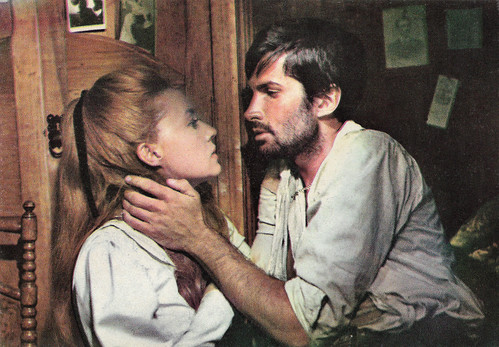
Italian postcard. Photo: Dear Film. Publicity still of Jeanne Moreau and George Hamilton in Via Maria! (Louis Malle, 1965).
Honours
As her leading-lady days began to wane, Jeanne Moreau made a graceful transition to character parts. She used her standing in the French industry to foster the careers of young directors such as Bertrand Blier, in whose 1974 feature Les valseuses/Going Places, she gave a cryptic but memorable performance, and Andre Techiné.
In 1975 she made her debut as a director with Lumière/Light (1975), the story of several generations of actresses. She also wrote the script and played Sarah, an actress the same age as Moreau. She also helmed L'Adolescente/The Adolescent (1978), a semi-autobiographical tale of a girl sent to live with her grandmother in 1939, and Lillian Gish (1984), an homage to the silent screen heroine.
She was the only actress who has presided twice over the jury of the Cannes Film Festival (in 1975 and 1995) and she was president of the jury at the Berlin Film Festival in 1983. She has won a number of honours, including two BAFTA Awards, three Cesars (the French Oscar), a Golden Lion for career achievement at the 1991 Venice Film Festival and a 1997 European Film Academy Lifetime Achievement Award.
In 1998 the American Academy of Motion Pictures presented her a life tribute. She also was made a Fellow of the British Film Institute in recognition of her outstanding contribution to film culture. And she was chosen by Empire magazine as one of the 100 Sexiest Stars in film history (#76) in 1995.
In 2000 she made her debut as a stage director with a Geneva and Paris production of Margaret Edson's Wit. The following year she was the first woman to enter the Academie des Beaux-Arts of Paris. In 2001 she also made her debut as an opera director with an Opera National de Paris production of Giuseppe Verdi's Attila.
Among her last films are Le temps qui reste/Time to Leave (François Ozon, 2005), Disengagement (Amos Gitai, 2007) and Visage/Face (Ming-liang Tsai, 2009).
Jeanne Moreau wasn romantically involved with Louis Malle, Francois Truffaut, Lee Marvin, and fashion designer Pierre Cardin. Vanessa Redgrave named Moreau as co-respondent in her 1967 divorce from director Tony Richardson on grounds of adultery. Richardson and Moreau would never marry.
Jeanne Moreau married - and divorced - three times: to actor-director Jean-Louis Richard (1949-1951), to Greek actor Teodoro Rubanis (1966-1967), and to Excorcist director William Friedkin (1977-1980). She had a son with Richard, Jérôme Richard (1950) who is a successful painter.
Trailer for Ascenseur pour l'échafaud/Lift to the Scaffold (1958). Music: Miles Davis. Source: BFI Trailers (YouTube).
Trailer for Les amants (1958). Source: Corey Mike (YouTube).
Trailer La notte (1961). Source: Rialto Films (YouTube).
Jeanne Moreau sings Le Tourbillon in Jules et Jim (1962). Source: Dansmoncafé (YouTube).
Jeanne Moreau sings Each man kills the thing he loves in Querelle (1982). Source: KLAUSHY Br (YouTube).
Sources: Rebecca Flint Marx (AllMovie), Dale O'Connor (IMDb), Filmreference.com, Wikipedia, and IMDb.
